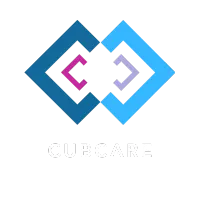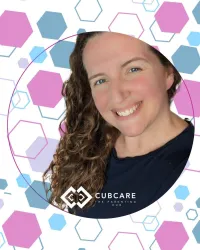We're an award winning Antenatal and Postnatal Education Platform 2025!
(read more here)
CubCare blogs.
From early pregnancy to newborn development.
Advice to help through pregnancy, birth and childhood.
BLOG
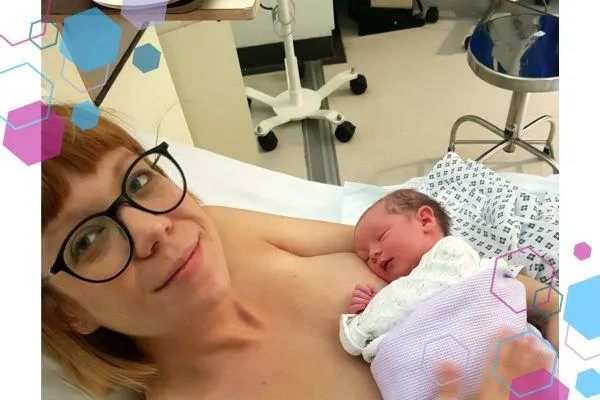
A fast hypermobility syndrome birth story
“As I went to cross the road from the office to the pub for my leaving do, I thought I’d suddenly wet myself. As the thought formed in my mind, I came to the realisation that I was not actually wetting myself, but that my waters were breaking.” - Gemma
Birth Story Series – Gemma and Dotty's Lister Hospital fast hypermobility syndrome (EDS) birth story
Gemma has hypermobility syndrome, which can have an impact on pregnancy and birth. Everybody is different, but people pregnant with hypermobility syndromes or EDS are more prone to: pre-labour spontaneous rupture of membranes (waters breaking before contractions), very fast active labour, issues with epidurals not working as well as they should, issues with general anaesthetic and drops in blood pressure, malposition of baby at birth that could result in trauma, extra bleeding after birth, perineal tearing and slower wound healing.
Hypermobility spectrum disorders (HSD) are connective tissue disorders that cause joint hypermobility, instability, injury, and pain Connective tissues provide support in skin, tendons, ligaments, blood vessels, internal organs and bones - so it should be unsurprising that it can have an impact on pregnancy and birth.
In Gemma's words, "here’s my birth story. It’s ultimately positive, fast, and left me with some lessons learned about self-advocacy and being confident about my choices."

Last day of work, yay - two weeks off...until my water's broke!
I left the office at 5pm on my last day of work before maternity leave. I was looking forward to some time off before my due date, two weeks and one day later.
As I went to cross the road from the office to the pub for my leaving do, I thought I’d suddenly wet myself. As the thought formed in my mind, I came to the realisation that I was not actually wetting myself, but that my waters were breaking.
My colleagues and I got to the pub and, as more colleagues joined, I tried to figure out what to do. I work in Brixton, South London and lived in Welwyn Garden City, Hertfordshire – it was a long way home!
I called the maternity unit at Lister Hospital and they urged me to try and get back, if possible, and go in for some checks, as I was booked in for a growth scan the next day. My friend got me an Uber and off I went with two brilliantly supportive colleagues to Hertfordshire, while sat on multiple layers of their clothing.
Early labour - this will take a while...won't it?
As the Uber left the A1 motorway for Welwyn Garden City, contractions began – I was in latent/early labour.
I got home to my partner, changed my amniotic fluid-soaked clothes, and got in the car to go straight to Lister Hospital, who were providing my maternity care. When I arrived, I was directed to wait in a side room.
The ward was incredibly busy. There were no lights on in the room, no staff came in, and we waited there for an hour while contractions became more frequent and intense.
My partner had gone to find someone to make sure they knew we were there, but we were only engaged with when someone heard me screaming and came to find us in the room.
I was then sent for monitoring, but in the consultant-led unit (CLU) at Lister rather than the midwifery-led unit (MLU) that I had hoped to give birth in. There were two reasons for this. The MLU was beyond capacity and there was no room at the inn, and because I had been due a growth scan, I needed some monitoring in the CLU. I was disappointed, and still am, but understood the reasons.
Don't send me home, I have hypermobility syndrome!
I had a consultation with a midwife in the Consultant Led Unit. He asked if I was sure my waters had broken, and I hadn’t wet myself. I was sure my waters had broken, I know my body, I hadn’t weed continuously for two hours. He was sceptical and checked me over – my waters had indeed broken.
I was only 3cm dilated (I think… maybe less). The midwife said he expected I’d be sent home until labour had progressed.
I asked him to read my notes. I have hypermobility syndrome and there was a bright yellow sheet of A4 on the front of my notes with information from a consultant anaesthetist urging maternity care providers not to send me home, because I was at risk of labouring rapidly.
I was placed on a monitor and again told that once baby had been monitored and they were happy, I would be sent home. I again prompted them to pay attention to the note from the anaesthetist, but was told it was fine to go home as I was only a few inches dilated, and was given some paracetamol for the escalating contractions.
Within five minutes, the midwife was running back into the room in response to my intense screaming. He said it sounded like things had progressed rapidly. Upon examination, I was 10cm dilated already. I was not sent home – I was in active labour.

She was keen to meet us - textbook hypermobile birth!
I was taken to a room on the CLU as contractions increased in frequency. I remember really trying to remember everything Jilly taught me in our active birthing classes, the breathing was the focus I needed and I tried my best not to lie on my back – to keep moving.
It was hard in a room on the CLU because it wasn’t the MLU environment I expected, which promotes movement and provides a calm atmosphere. A room with a bed and a chair and strip lighting isn’t really the ambiance I was hoping for, but that was a concern for hindsight because the baby was coming.
My mum arrived at this point, but everything is hazy because contractions were so close together. My mum was a midwife for many years. She didn’t want to interfere, but tried to alert the midwife at the time that the baby was coming imminently. He disagreed – I’d only been in active labour for a few minutes.
There was a change-over of midwifery teams then and I was introduced to the two midwives who would be there for delivery. The midwives really put me at ease and were brilliantly supportive. They recognised that birth was imminent. I somehow ended up on my back, probably because I needed examining. I asked for pain relief: I was too far along for an epidural, so I asked for morphine. I was too far along for IV painkillers because baby was coming so fast.
Attention diverted to baby’s heartrate dropping because things were happening so rapidly. Suddenly a consultant was in the room talking about intervention. I remember them talking about an episiotomy and forceps delivery. I didn’t want intervention but was also out of my mind at this point and was struggling to communicate this to any of the professionals, partner, or mum.
As this was happening, and oral morphine was about to be given to me, baby’s head appeared – she put a stop to the intervention herself! I strongly believe that if she hadn’t appeared, I would have had an episiotomy and possibly a forceps delivery without fully understanding what was going on.
Then, not long after midnight, a few hours after my waters breaking when leaving work, my daughter, Dotty was born.
Postnatal and home - busy, hot ward and a newborn, sleepy baby
The usual checks were done for Dotty. I lost quite a lot of blood, but not enough to raise too many alarm bells and I was transferred to the postnatal ward overnight.
The next day, the ward was chaotic. I needed feeding support because Dotty wouldn’t latch. This was really difficult, and the midwives and support staff were rushed off their feet – I found out after that it was the busiest night of the year for the maternity unit, and it was also over 30 degrees in temperature.
I wanted to go home, but they didn’t want to discharge me until they’d seen Dotty feed again. Feeding issues persisted into the evening and I was getting more anxious, and the ward was sweltering.
I requested to discharge myself and try feeding at home in my own environment. The midwife was supportive and trusting. She just asked that if Dotty still wouldn’t feed that I come back, and try syringe feeding.
We went home at 11pm that night, cooled down, got settled, relaxed… and Dotty had a massive feed. Advocating for myself and following my instincts had worked!
Looking back on the birth, I’d plan a home birth if I did it all again. It would save all the rushing!
Words from Jilly - waters breaking before labour
When you waters break at term (37 weeks plus) you would be recommended to do exactly what Gemma did. To phone triage and then go in to be checked. This can be a good idea, if you are unsure if it was your waters, or if there are any signs of infections or meconium. If you are confident that it was your waters and there was no meconium (baby’s first poo), no signs of infection and your are feeling baby move as normal then you can choose to wait at home.
Around 1 in 10 people experience their waters breaking before contractions start, for most waters go in active labour, for others they may not go at all. (The only stats I see on en caul births is 1 in 80,000 but I had one and I know many others who had the same…!)
At 37+ weeks, contractions will usually start not too long after waters go. You may be invited in for an induction of your labour once you get towards 18-24hrs after.
But it is crucial to know the statistics and the evidence as induction will often take you beyond the 48hrs where 90% of people have spontaneously gone into labour and it is important to know the risks of induction, and the length of time induction takes – and then weigh them up carefully for you personally.
Routine use of antibiotics has been found to not alter numbers of infections and again carry their own risks.
If your waters go:
💦 if they are clear or straw like you’re good
💦 any other colour is worth flagging – bright red is an emergency situation 🚩
💦 no offensive odor (amniotic fluid can be sweet smelling)
💦 over 37 weeks all good to wait👍
💦under 37 weeks seek medical attention 🚩
💦 keep an eye on how you’re feeling and/or your temperature
💦 seek help for any changes in baby’s movements
💦 inform your care team but remember recommendations are just that – and are not always evidence based…!
(any specific issues relating to your own pregnancy need to be discussed with your own care team)
Final words from Jilly this is the perfect example of a positive birth with hypermobility syndrome/HSD/EDS/Elhers-Danlos Syndrome
Hypermobility Spectrum Disorders and hEDS come with higher chances of certain things. Pre-labour spontaneous rupture of membranes (waters breaking before contractions), very fast active labour, issues with epidurals not working as well as they should, issues with general anaesthetic and drops in blood pressure, malposition of baby at birth that could result in trauma, extra bleeding after birth, perineal tearing and slower wound healing.
But this doesn't automatically mean there will be issues with your birth. Pregnancy and birth with a long term, chronic condition can be managed. As with everything, knowing there is a higher chance of something happening means that you can be prepared.
In Gemma's case, she'll be planning a home birth with any other babies she has. This will mean she can stay relaxed, in her comfort zone and not relying on medical professionals not understanding her body and her condition. Her home birth team can be briefed and prepared for her situation; but a planned home birth reduces the need for medical intervention and other outcomes listed above.
Huge congratulations Gemma, a positive and uplifting birth story of a baby keen to join the world quickly!
Our bodies are SO capable, even with long term conditions. With the trust, the knowledge and the education you CAN have an amazing birth experience.
That's why we have our Antenatal Course (both in person and online).
Antenatal Course in person
Antenatal Course online
Birth Partner course (included in our Antenatal course)
Refresher Antenatal Course in person
Refresher Antenatal Course online
Easily navigate to our most popular Blog categories
Download our Freebies
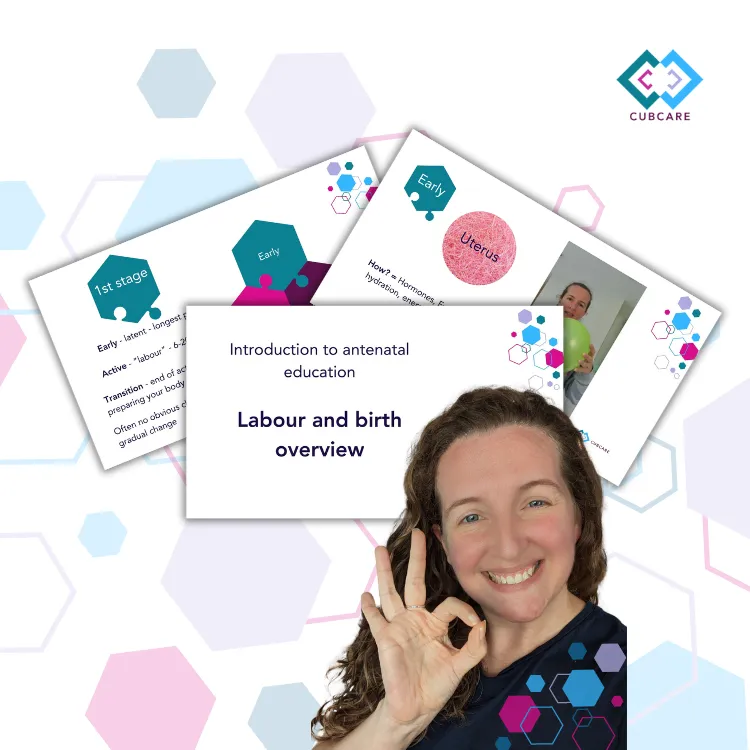
Labour and Birth
Watch our introduction to antenatal education webinar, our labour and birth overview - to start your antenatal education journey. Understanding the process, and what you can do to influence it.

Pregnancy Planner
Free Pregnancy Planner to help you prepare for a little one. Prepare your body, your mind, your finances and your home. Get organised, feel good and prepare for an active, positive birth.
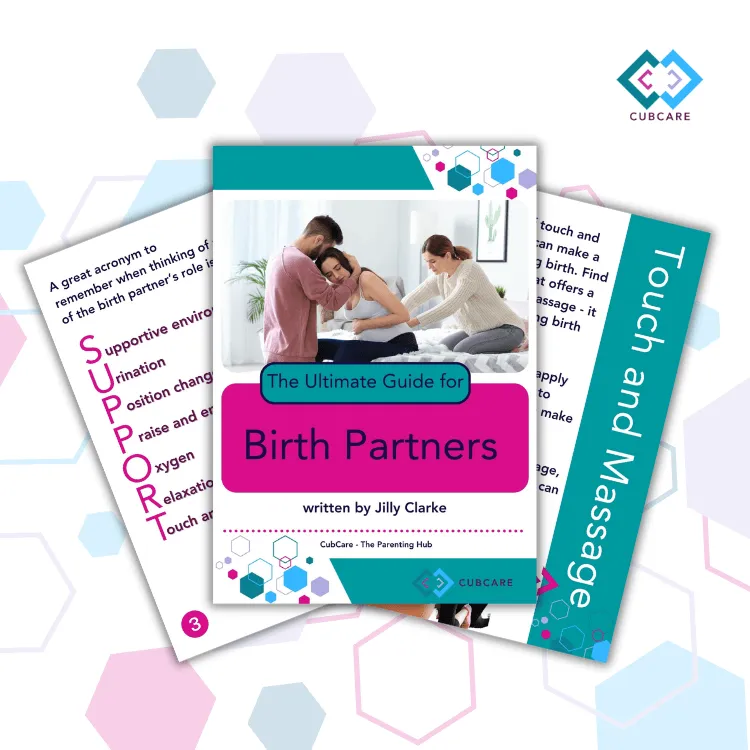
Birth Partner Guide
Your ultimate guide to being the best birth partner during pregnancy, birth and recovery. Learn what you need to do, and what you need to learn to be the best birth partner possible.

Expecting Again Guide
Your ultimate guide to preparing for another birth and an extra baby. Our top tips for navigating pregnancy and birth, and helping your older ones to transition into their new role as a big sibling.
Based in Welwyn Hatfield, offering local pregnancy support and doula services across Hertfordshire: St Albans, Hatfield, Welwyn Garden City, Potters Bar, Stevenage, Harpenden, Hitchin, Barnet, Mill Hill and surrounding areas.
Online antenatal and postnatal education available UK-wide.
© Copyright 2025 CubCare The Parenting Hub. CubCare is operated by The Birth and Baby Company Ltd. Company No. 15655287
Privacy Policy | Terms & Conditions | Medical Disclaimer | Inclusivity and Accessibility
